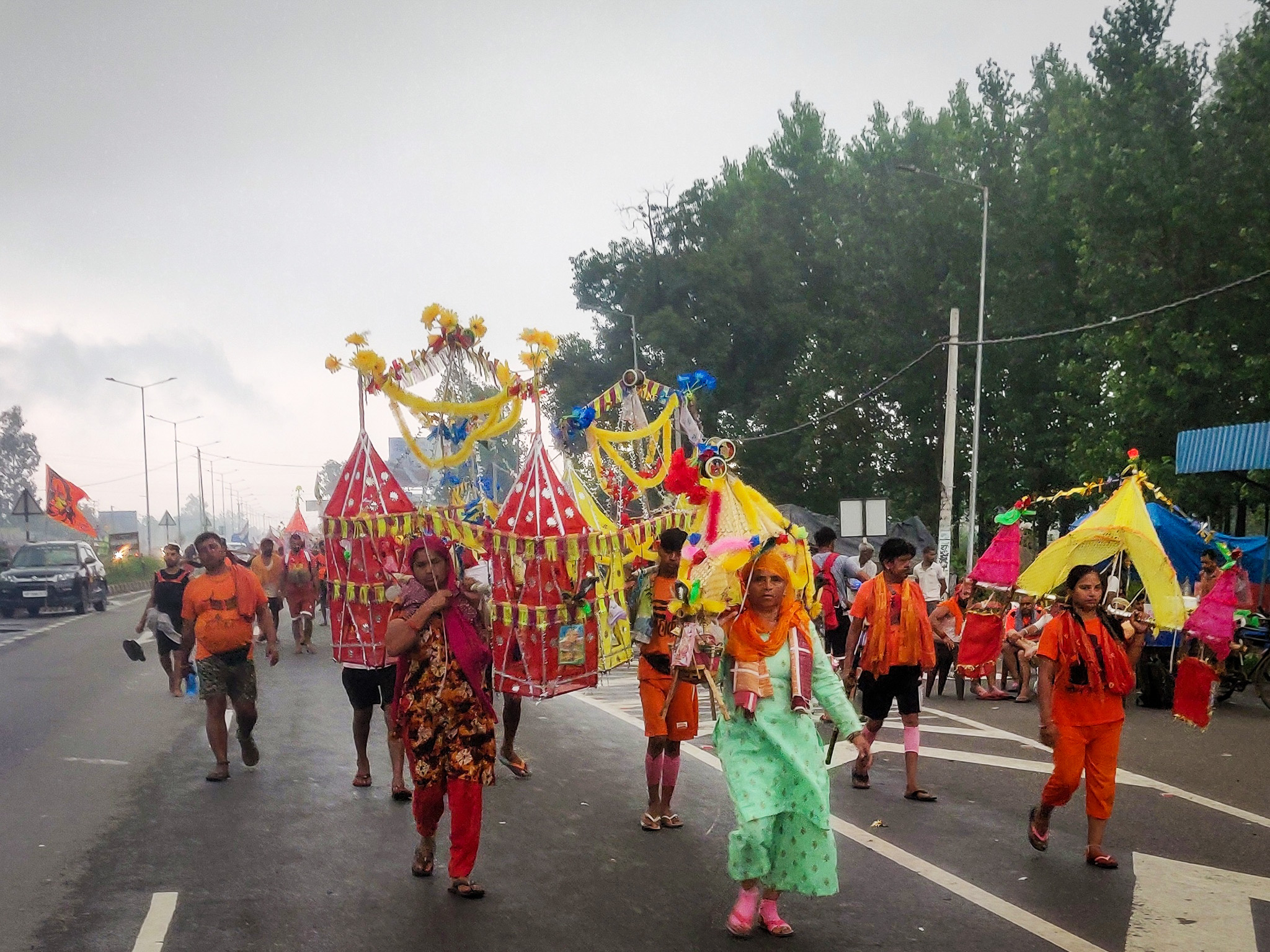Anil Bairwal, July 2020

When I was growing up, in a remote village in Western UP, the kanwar yatra used to be an all-male affair. The role of women was that of a helper— wives helping their husbands, mothers their sons, and sisters their brothers.
They helped in preparations. They would start giving the would-be kanwariya an extra spoonful of ghee with meals and an extra helping of milk at night. They would send them off in style—by doing a pooja for their safe yatra, putting a tilak on their forehead, and accompanying them to the outer limits of the village by singing songs. When the kanwariyas were back, they would help nurse them back to total health.
But over the years, the women themselves have started undertaking these yatras. In fact, their presence has started to become quite visible these days. And it not just the young and educated that are taking these yatras, even the mature adult and old women are participating enthusiastically. They also seem to belong to all types of demographics—from villages as well as urban areas.
The women are quite conspicuous in the yatra, which is natural. They are usually seen in a group with other women or accompanying their family members—their husband, father, or a kid. They are seldom seen trudging alone, as we see many male kanwariyas. This is understandable because of security reasons.
These are all good signs at many levels. Western UP and Haryana are considered to be one of the most patriarchal societies, but from this trend, it seems that the men have started accepting the idea of women undertaking these yatras.
The other thing that the trend shows is that women also feel safe taking these yatras. This is an equally important shift because the percentage of women in these yatras is still minuscule. But these women walk confidently days and nights, with little idea of where they will be sleeping and eating. This says a lot about the respect that the men kanwariyas and the communities along the yatra routes give them.
The only thing that I wonder is about when happens when women kanwariyas reach their homes after completing the yatra. Are they also pampered and nursed by the family in the same way the male kanwariyas are? I have a feeling that they are! Because such changes, when they take place, do not happen in a single direction. They touch every aspect of life.



